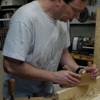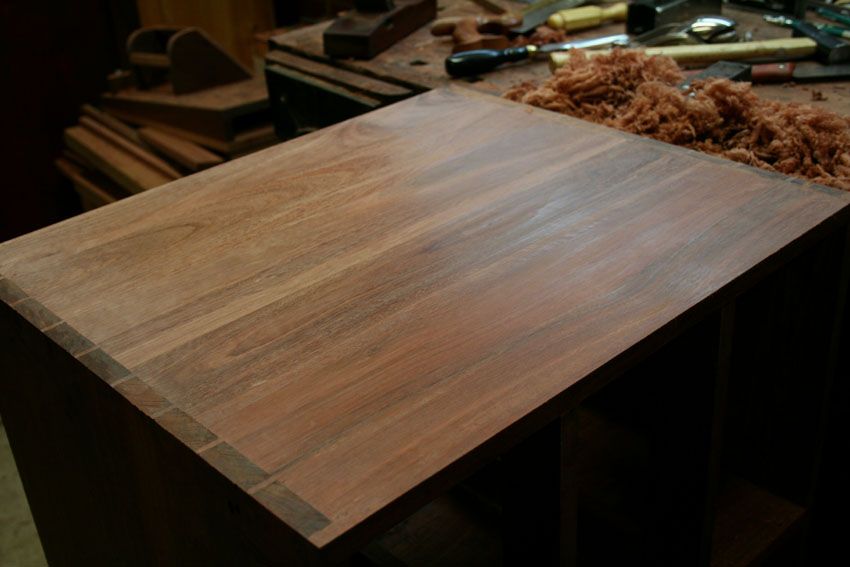It doesn't need to scrape, planing is preferable, anyway, because it will work on woods that are marginal in hardness for a nice scraped finish.
For economy, If I were in your shoes, I would build a single iron plane in krenov style if functionality is your concern, and build it with a 55 degree angle and a mouth that is nonexistent at first (i.e., exactly closed at the iron edge). You can open it a few thousandths after that to create a very tight mouth that makes it very hard for you to worsen any tearout situation.
It should negate the need to scrape at all if built properly (and you can build it quickly).
Also, using a single iron will allow you to do neater mouth work with a mouth that follows the iron more closely (which will stay tightly closed as you lap the bottom of the plane in the future). Doing so with a double iron will create clearance problems for chip flow.
I don't favor that type of plane (I recognize that it's very effective) and built a couple of infills instead, but same premise - very tight mouth, 55 degrees and single heavy iron. For curly maple, they are essentially foolproof. I have not scraped any figured wood since I built them.
Save the japanese plane venture for later, it is not the best solution for immediate use on curly maple for someone who is not a japanese plane user. Consider anyone who tells you otherwise to be semi-religious about using japanese planes (I have a lot of them, I use them on curly maple, it's not the place to start with them).
Thick O1 would be my first choice for an iron. There's no need to have a laminated iron, especially if you are going to power grind (and you should unless you want to sharpen for entertainment).




 Reply With Quote
Reply With Quote








